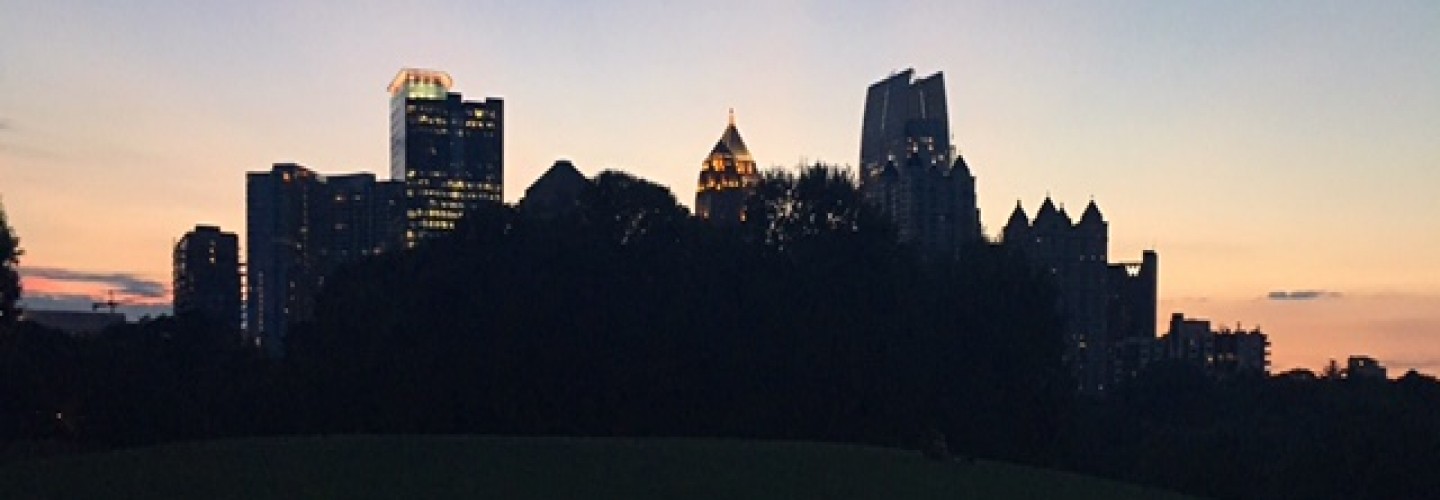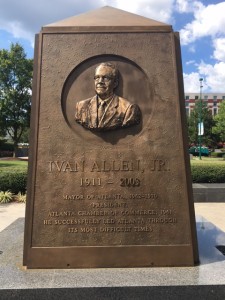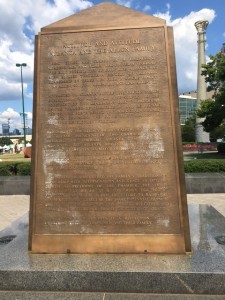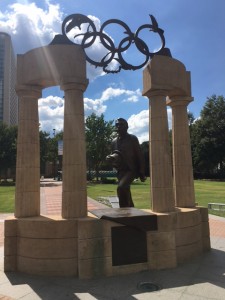Dad’s Garage
Hidden on small one-way streets and out of the way of major roads sits an old church building. From the outside, the building looks like nothing more than just a regular church, likely Baptist or Methodist, save for the large yellow and blue logo on the front. A group of friends and I parked across the street in a gravel parking lot, and all nine of us spilled out of my SUV, excited to get inside. For a little less than a year, this church has been the home of an improv theather called Dad’s Garage. This theatre company has given Atlanta great times and great laughs since its founding in 1995. On this particular Wednesday night, we headed to the theatre for an improv show, featuring our very own Max Kantor.
The entrance to the venue is located at the front of the building, facing the street. The doors had signs on them, one of which read “Use the other door!” and the other stating “This is the other door!”. We walked through the doors and were greeted with chic, matte black walls adorned with various paintings. Straight ahead along the back wall, there was a ticket booth, where a medium height man with an orange hipster beard stood, telling us which line to join. The giant marquee above him read “TICKETS” in bright, yellow lights. To the right of the ticket booth was the concession stand, equipped with snacks and drinks, both with and without alcohol. Turn around, and you’d see the small, intimate seating area surrounding the small stage. There was a long, high standing bar with seats on the right-hand side of the stage, separating the seating area from the line of people waiting to get tickets. That’s where some of the cluster kids and I sat. Directly in front of us were a few tables set up with two chairs at each. Behind the tables were about four or five rows of chairs, separated by a small center aisle. On the left side of the stage, near the rows of chairs, stood an old-school video game, joystick and everything. Also along that wall were two paintings. One was on a white background, using black paint, and it had a giant collage of different people’s faces with different speech bubbles popping up here and there. The other painting was a parody of The Last Supper. Both paintings were comedic in nature, providing the small area with a bit of artistic appeal.
Overall, the venue was very intimate. It was nice to be so close to the stage. This particular stage only held capacity for about 40-45 people, 27 of which were there to support Max. The other actors joked that Max brought his own audience with him. The whole staff and even the audience itself was filled with kind people, seeking good, clean entertainment. The people, the set-back location, and the interesting decorations all contributed to a very comforting feeling. During the improv, the actors required a lot of audience participation, making you feel like you were apart of the Dad’s Garage family. The performance was great, as was the company, making this experience very enjoyable. There are very few theaters like this in the city of Atlanta, let alone one that provides this kind of humorous entertainment. Dad’s Garage provides the area that we all call home with its own, unique source of entertainment and as a result, contributes greatly to the culture of downtown life.









